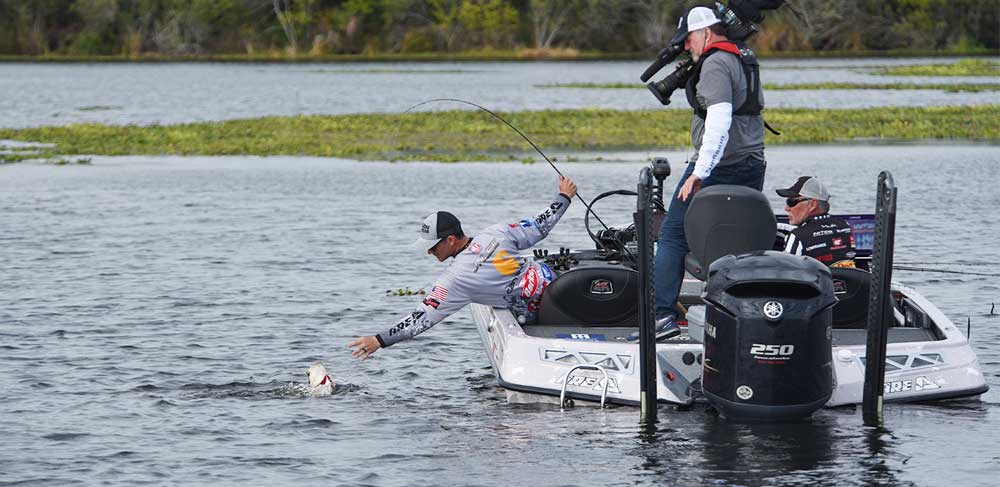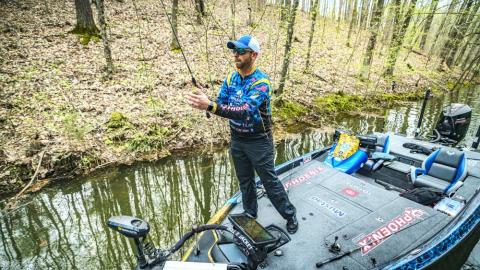provided by John E. Phillips
Twenty-eight-year-old Jordan Lee, who now lives on Alabama’s Lewis Smith Lake, has been a professional bass fisherman for 6 years, currently ranks as the no.7 best bass fisherman in the world and won the 2014 Bassmaster College Series Championship while fishing on Auburn University’s bass fishing team. He’s won two Bassmaster Classics – 2017 and 2018 – and today fishes with Major League Fishing (MLF) having earned $1-1/2 million in tournament fishing. To learn more about Jordan Lee, visit https://www.facebook.com/Jleefishing/.

If I’m fishing in shallow water during the shad spawn, or when the bass are feeding in shallow water during the day, I like to fish with a white swim jig for the same reason that I enjoy fishing with the bladed jig. I prefer a 1/4-ounce swim jig with a white skirt, a white craw or a white Berkley Powerbait Power Chunk trailer. I can swim this bait around the grass, and it doesn’t have the vibrations or the sounds of the bladed jig. The swim jig, more or less, sneaks up on the bass and has more of a subtle presentation. The swim jig also catches big bass like the bladed jig does, but with a different sound and more silent lure presentation.
I like to use the swim jig when the shad are spawning around thick cover, and the bladed jig when the shad are spawning on a rocky bank, a hard clay bank or more open cover. Since the bladed jig has an open hook, it may get hung up while you’re fishing around heavy cover or grass. However, the swim jig has a weed guard on it, making it possible for it to swim high in the water without catching any weeds. I also can give the swim jig a different action than the bladed jig. I can use my rod to pop the swim jig and give it an erratic darting action that I don’t give the bladed jig, which I usually fish with a steady retrieve.






























